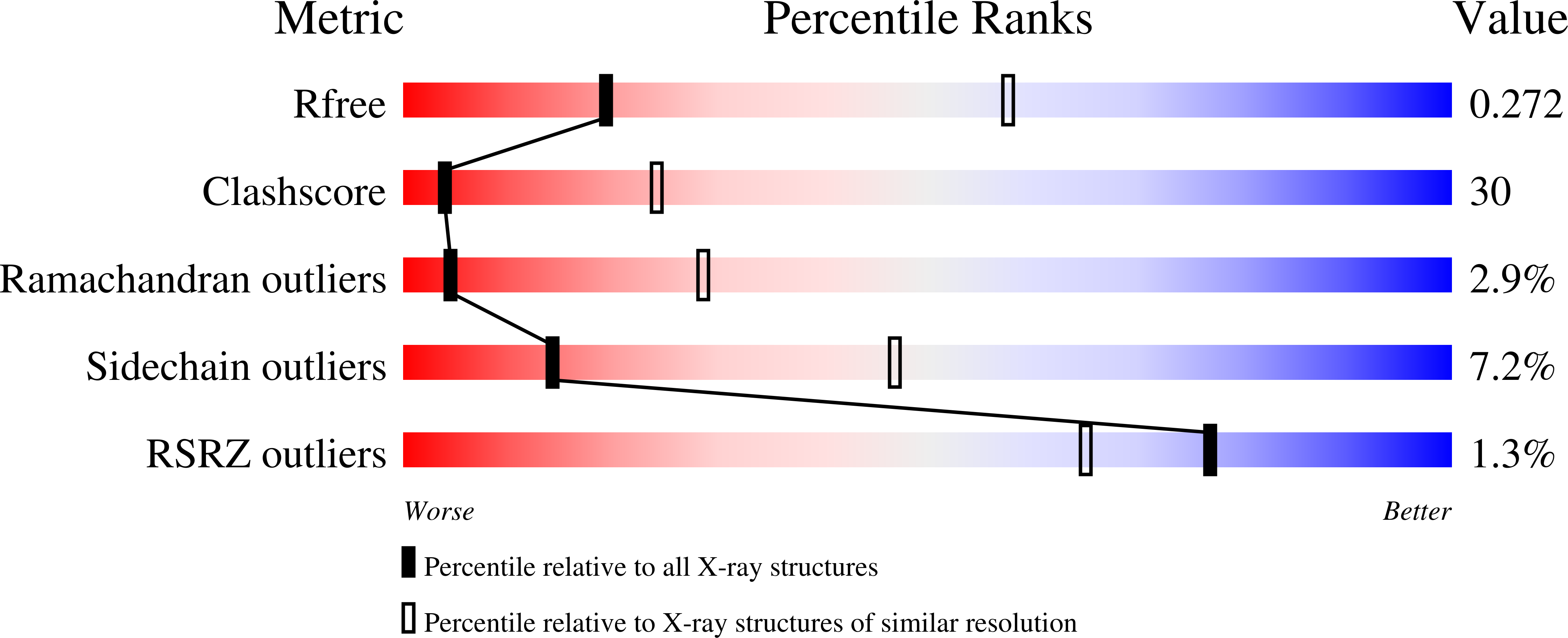Structure of rat monoamine oxidase a and its specific recognitions for substrates and inhibitors.
Ma, J., Yoshimura, M., Yamashita, E., Nakagawa, A., Ito, A., Tsukihara, T.(2004) J Mol Biol 338: 103-114
- PubMed: 15050826
- DOI: https://doi.org/10.1016/j.jmb.2004.02.032
- Primary Citation of Related Structures:
1O5W - PubMed Abstract:
Monoamine oxidase (MAO), a mitochondrial outer membrane enzyme, catalyzes the degradation of neurotransmitters in the central nervous system and is the target for anti-depression drug design. Two subtypes of MAO, MAOA and MAOB, are similar in primary sequences but have unique substrate and inhibitor specificities. The structures of human MAOB complexed with various inhibitors were reported early. To understand the mechanisms of specific substrate and inhibitor recognitions of MAOA and MAOB, we have determined the crystal structure of rat MAOA complexed with the specific inhibitor, clorgyline, at 3.2A resolution. The comparison of the structures between MAOA and MAOB clearly explains the specificity of clorgyline for MAOA inhibition. The fitting of serotonin into the binding pockets of MAOs demonstrates that MAOB Tyr326 would block access of the 5-hydroxy group of serotonin into the enzyme. These results will lead to further understanding of the MAOA function and to new anti-depression drug design. This study also presents that MAOA has a transmembrane helix at the C-terminal region. This is the first crystal structure of membrane protein with an isolated transmembrane helix.
Organizational Affiliation:
Institute for Protein Research, Osaka University, Yamadaoka 3-2, Suita, Osaka 565-0871, Japan.
















